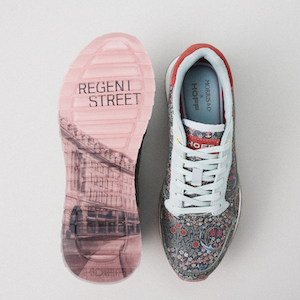Barebones; Bearing Witness
By Jo Phillips
 Shirley Baker: Personal Collection, Image 5, Manchester, 1966
Shirley Baker: Personal Collection, Image 5, Manchester, 1966
© Estate of Shirley Baker, Courtesy of The Photographers’ Gallery

Shirley Baker: Personal Collection, Image 7, Salford, 1962
© Estate of Shirley Baker, Courtesy of The Photographers’ Gallery
What is left after a war? Is it barren land stretching as far as the eyes could see? Or is endless piles of rubbles of bunkers and buildings?
But no matter what it is, life in Britain after the war had to go on. There may not have been a lot left, but the British spirit lingered; be it drinking tea or attending the Royal Ascot. And who better to depict a most earnest post-war Britain than our very own Jane Brown (The Observer Collection, Proud Central, 28th June – 12th August 2018) and Shirley Baker? These great female photographers can be said to have British DNA running even throughout their works. Thought to be the only woman practising street photography in such a male-dominated industry at the time, Shirley Baker is known to focus more on the community and collective shots, whereas Jane Brown — who epitomises being an observer — is celebrated for her individual portraits and occasional crowd photography, and can be noted for her work as a photographer for The Observer from 1949 for almost half a century. So, what do you get when you put these two together? Only the most perfect ensemble to depict the idiosyncrasies of daily British life using “decisive moment” photography; pioneered by Henri Cartier-Bresson, it is a technique described as the split-second during which the photographer instinctively realises that a photograph must be captured.
Between them, the two photographers achieve a balance in the portrayal of the rich and the poor, the famous and the unknown. Various cultural figures that Jane Brown photographed included the likes of Samuel Beckett and Mick Jagger, whereas Shirley Baker concentrated on communities in North-East England, placing more importance on the working class. Both of their humanist documentaries exhibit this British artistic legacy to portray a simple and honest image using black and white film photography and the candidness achieved in the lack of gimmicks and tricks undoubtedly makes the result all the more poignant. It seems that the aftermath of World War Two in Britain, as interpreted by these two women, was not just about capturing the last traces of war-scars and the lingering hints of fear. Rather, their observation was of the present time, the perseverance of the people as they allow the tragic past to fade and disappear, while simultaneously striving to face head-on to challenges ahead as Britain prepares for other cultural and social battles.
 Jane Brown: The Observer, Pensioners protesting outside Thatcher’s home, 1980
Jane Brown: The Observer, Pensioners protesting outside Thatcher’s home, 1980
© Jane Brown Estate, Courtesy of Proud Galleries

Jane Brown: The Observer, Mick Jagger, 1977
© Jane Brown Estate, Courtesy of Proud Galleries
The collection, Jane Brown: The Observer is now on at Proud Central in London from 28th June until 12th August 2018 https://www.proudonline.co.uk/exhibitions.



